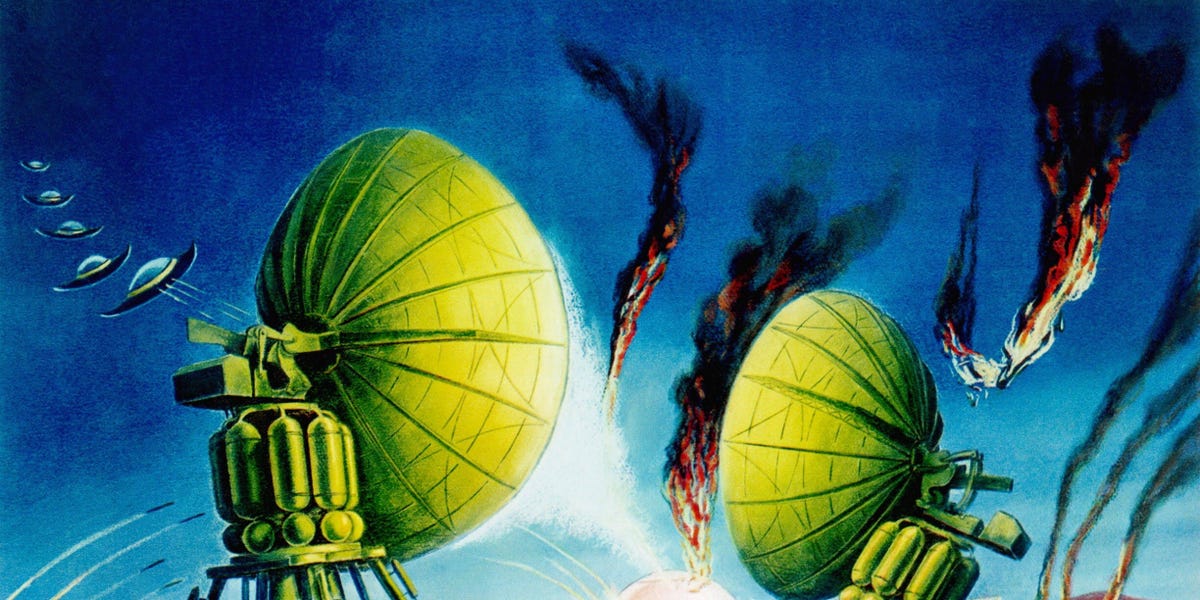
Experts on space security and the risks posed by nuclear weapons told Business Insider that rumors of Russia creating such a weapon are likely true but that it’s not time to panic just yet.CNN, citing anonymous officials familiar with the intelligence, reported that the device military officials have been briefed on is a sort of nuclear EMP designed to “destroy satellites by creating a massive energy wave when detonated, potentially crippling a vast swath of the commercial and government satellites that the world below depends on to talk on cellphones, pay bills, and surf the internet.”NPR reported the White House confirmed that Russia is working on a weapon that could threaten satellites in space but that nothing has been deployed.Deploying such a weapon would violate the Outer Space Treaty of 1967, which the Soviet Union and 113 other countries — including the US — signed. If the treaty were violated, it would warrant international retaliation.What would a space nuke do, exactly?However, Russia has been developing anti-satellite weapons for years, John Erath, senior policy director at the Center for Arms Control and Non-Proliferation, told BI.”They’ve tested one, they’ve destroyed one of their own satellites with them, and they’ve proven that they can do this,” Erath said. “So these reports that have come out this week are not at all, in any way, surprising. It is certainly highly believable that they would be working on something new and more efficient as a way to take down American satellites. But that’s where this gets a little bit complicated because a nuclear weapon isn’t really that.”Nuclear weapons, by their nature, are not precise, meaning even a relatively controlled blast would take out anything in its immediate vicinity — so Russia couldn’t target American satellites without risking its own, many of which operate at a similar orbit.The potential damage isn’t negligible: In Starfish Prime, a weapons test in 1962 during the Cold War, a 1.4 megaton nuclear warhead was detonated at about 250 miles altitude — low earth orbit, which is between 62 miles altitude to 1,250 miles. Eventually, that test took out about a third of the active satellites in orbit due to the blast, its debris, and the radiation left in its wake.These days, that altitude is where the International Space Station, the Hubble Telescope, and roughly 4,000 SpaceX Starlink satellites now operate.GPS satellites operate higher than that, in middle Earth orbit (about 12,500 miles up), and the US’s billion-dollar intelligence-gathering satellites, the nuclear command control satellites, and many SATCOM satellites are in geostationary orbit, about 22,370 miles up.The current intelligence on the prospective Russian weapon offers no indication that it would be anywhere near the size of the Starfish Prime warhead, nor what altitude it would be fired at, Victoria Samson, chief director of space security and stability at the Secure World Foundation, told BI.”Our intelligence is good, but not omniscient,” Samson said, referring to the United States’ stance before it invaded Iraq over the development of weapons of mass destruction. “So I’m hoping intelligence is wrong on this. But we don’t even know exactly what they think is happening just because of the classification, so a lot of it is just conjecture.”The most significant risk at this time, both Samson and Erath noted, is the potential for such a weapon to increase international tension between the US and Russia and normalize nuclear threats as a replacement for diplomacy.”If nuclear blackmail becomes normalized as a tool of international relations, then everybody’s going to want to have the capability to do it,” Erath said. “Ultimately, you don’t make threats if you’re not prepared to carry them out, and somebody at some point is going to want to carry one out.”He added: “And a nuclear attack anywhere in the world is a very serious thing. It’s not going to be the old Cold War mantra of destroying the world many times over; that’s science fiction. But the effects in its place, both in the neighborhood and worldwide, will still be catastrophic.”






